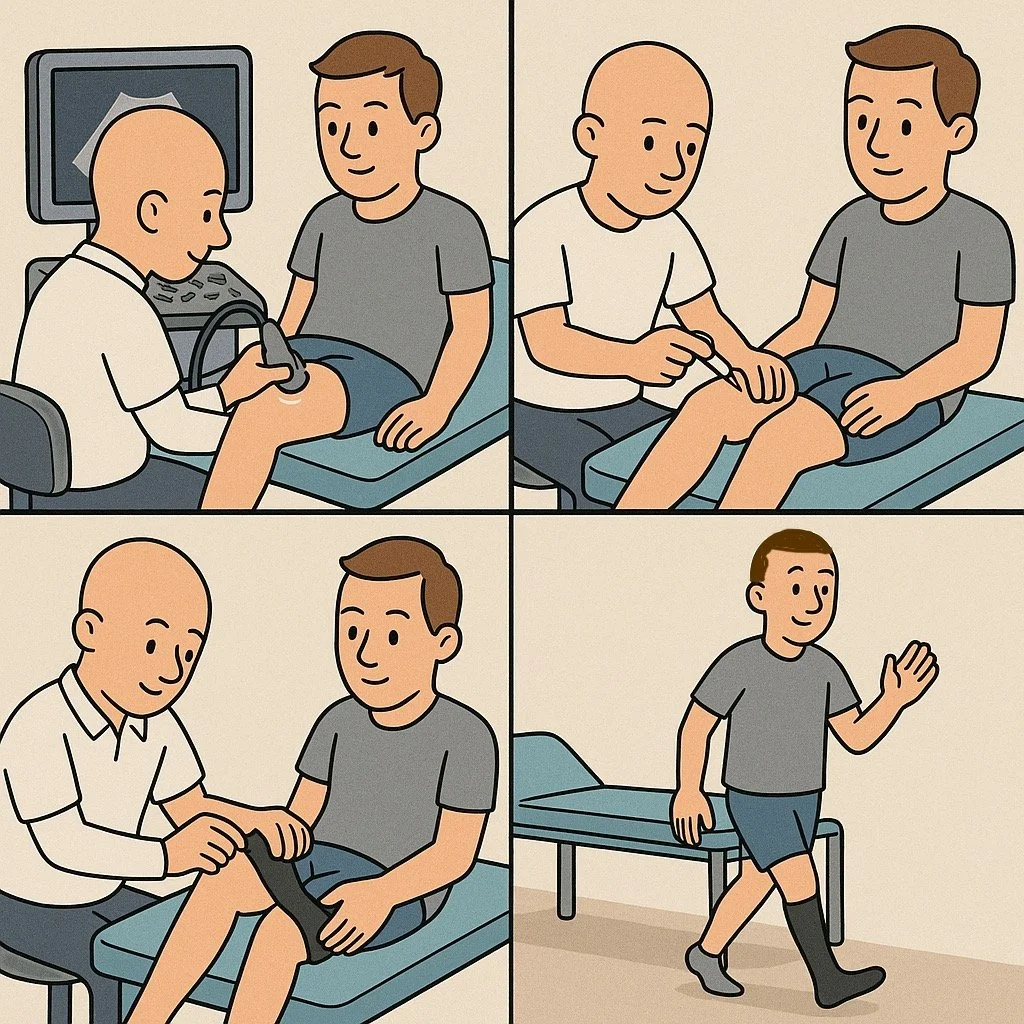FOAM Sclerotherapy
What is Ultrasound-Guided Foam Sclerotherapy?
Foam sclerotherapy is a minimally invasive procedure used to treat varicose veins. A special foam solution (called a sclerosant) is injected into the vein under ultrasound guidance. The foam irritates the vein lining, causing it to collapse and close. Over time, the vein is reabsorbed by the body and blood is rerouted to healthier veins.
Ultrasound guidance allows precise treatment of both superficial and deeper veins, including those not visible to the naked eye.
⸻
Who is this Treatment Suitable For?
Ultrasound-guided foam sclerotherapy is suitable for patients with:
• Varicose veins due to saphenous vein reflux
• Recurrent varicose veins after previous surgery or ablation
• Incompetent perforator veins
• Patients unsuitable for or preferring to avoid surgery or laser treatment
⸻
What Happens During the Procedure?
1. You’ll lie comfortably while your leg is scanned with ultrasound to locate the target veins
2. A fine needle or cannula is inserted into the vein under ultrasound guidance
3. Foam sclerosant is injected and guided into the affected veins
4. Compression bandages or stockings are applied immediately afterwards
The procedure usually takes 20-30 minutes and is performed on a walk-in, walk-out basis with no need for general anaesthesia
⸻
Benefits of Foam Sclerotherapy
• Minimally invasive and virtually painless
• Performed under local anaesthetic
• Quick recovery – back to normal activities same or next day
• No cuts or stitches
• Repeatable and adaptable for multiple veins
• Suitable for both cosmetic and symptomatic relief
⸻
What to Expect Afterwards
• You’ll be asked to walk immediately after treatment
• Compression stockings must be worn for 7–14 days, depending on vein size
• Mild bruising, tenderness, or a tight “cord-like” sensation along the vein is common and temporary
• Avoid long-haul flights and saunas for at least 4 weeks
⸻
Risks and Possible Side Effects
Common (>10%)
• Mild bruising or discomfort
• Skin staining (temporary pigmentation)
• Tender or firm areas along treated veins
Uncommon (1-10%)
• Phlebitis (inflammation of the vein)
• Visual disturbances or migraine-type symptoms
• Matting (fine red spider veins near treated area)
• Minor allergic reaction
Rare (<1%)
• Deep vein thrombosis (DVT)
• Skin ulceration at injection site
• Nerve irritation
• Transient ischaemic attack (TIA) or stroke (extremely rare, typically in patients with a heart defect such as PFO)
⚠ Seek urgent medical attention if you experience calf pain/swelling, chest pain, or shortness of breath.
⸻
Aftercare Instructions
• Wear your compression stockings as advised
• Walk regularly (at least 30 minutes daily)
• Avoid standing or sitting still for long periods in the first few days
• Avoid hot baths, saunas, and intense exercise for 2 weeks
• Avoid short haul flights 2 weeks and long-haul flights for 4–6 weeks
How Many Sessions Will I Need?
Most patients need between 1 and 3 sessions, depending on the size and number of veins. Additional treatments may be spaced 6–8 weeks apart
⸻
Success Rates
Foam sclerotherapy is successful in 80–90% of cases, with many patients reporting significant improvement in symptoms and appearance. Some veins may take several weeks or months to fully fade. Recurrence can happen over time and may require further treatment
⸻
Alternative Treatments
• Endovenous Laser Ablation (EVLA)
• Radiofrequency Ablation (RFA)
• Surgical vein stripping or phlebectomy
• Compression-only therapy
We will discuss the most appropriate option for you based on your vein pattern, symptoms, and overall health
FOAM sclerotherapy information leaflet is available here
